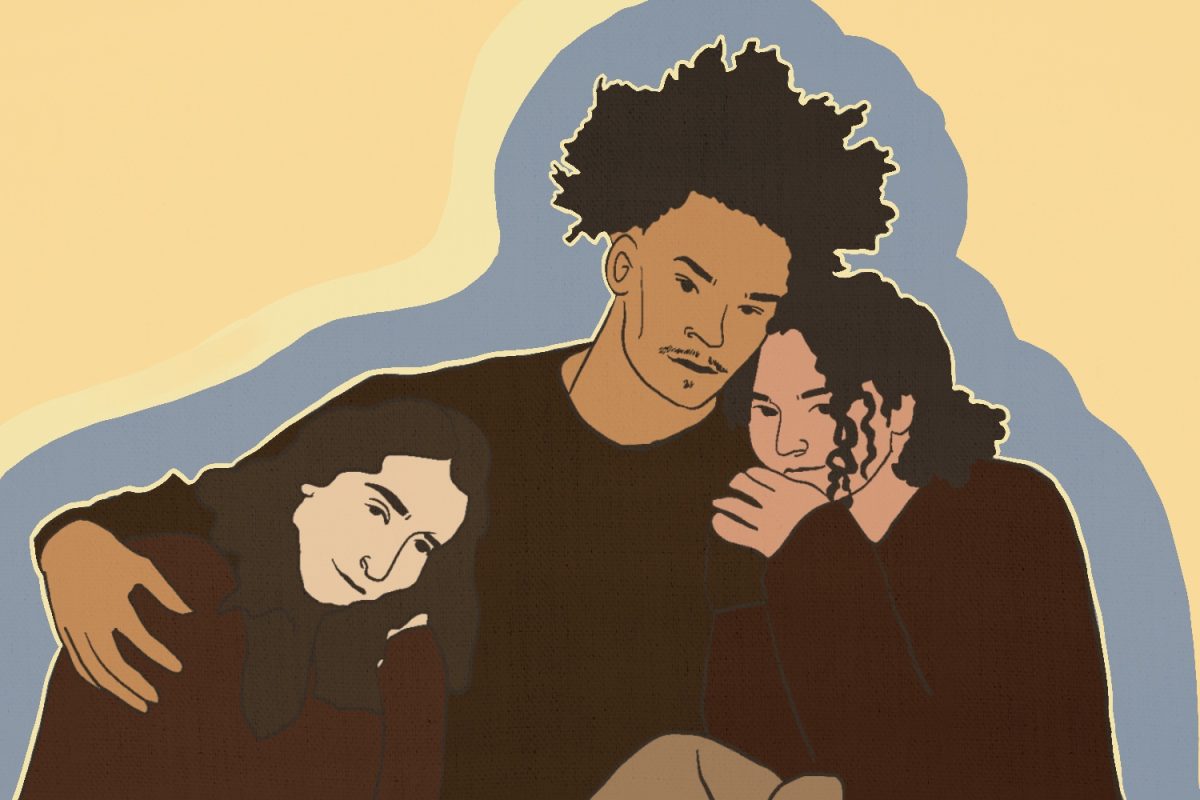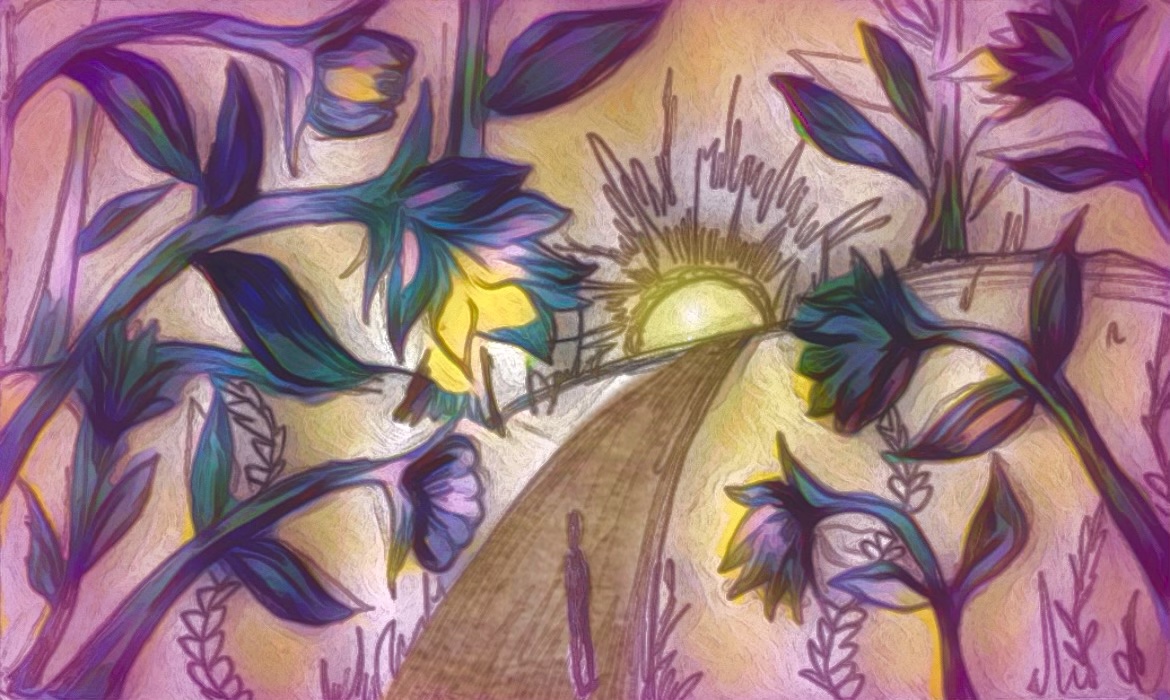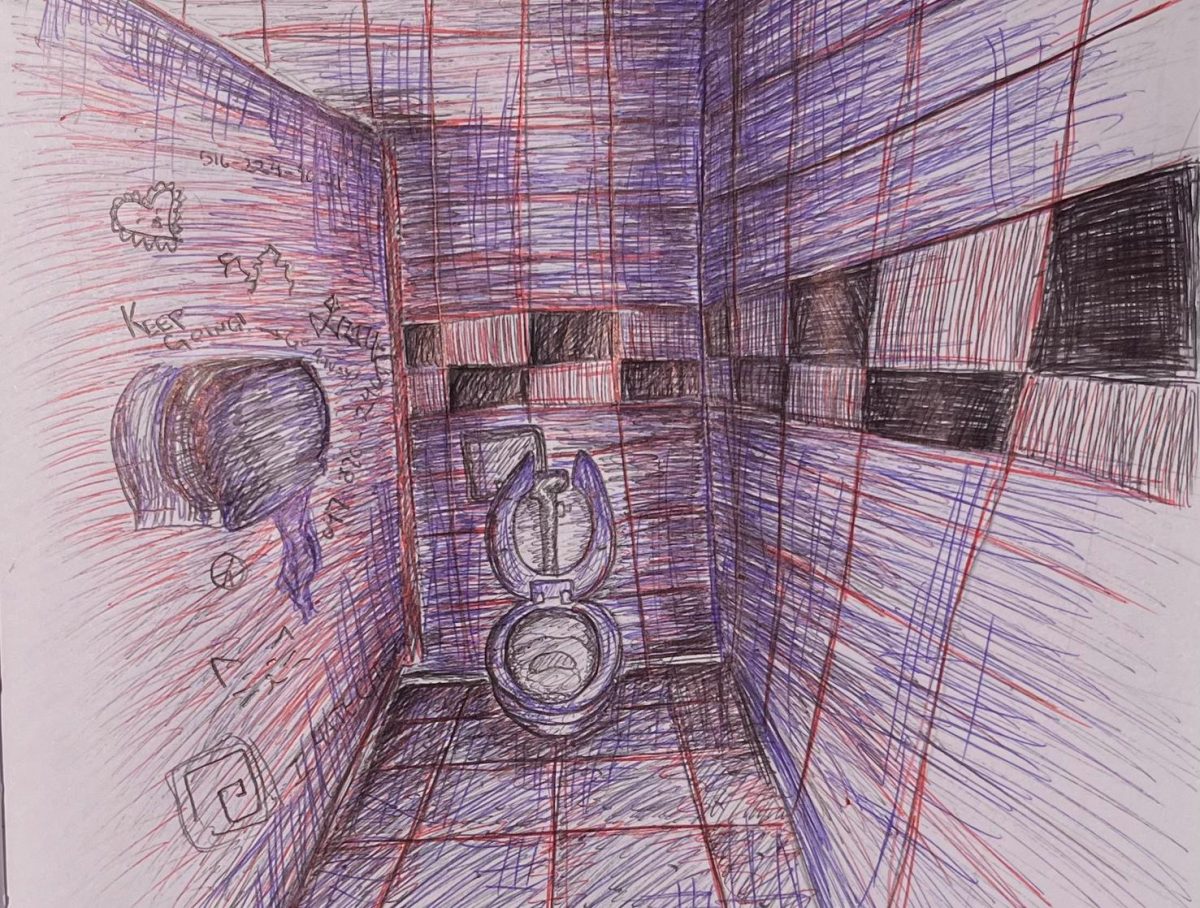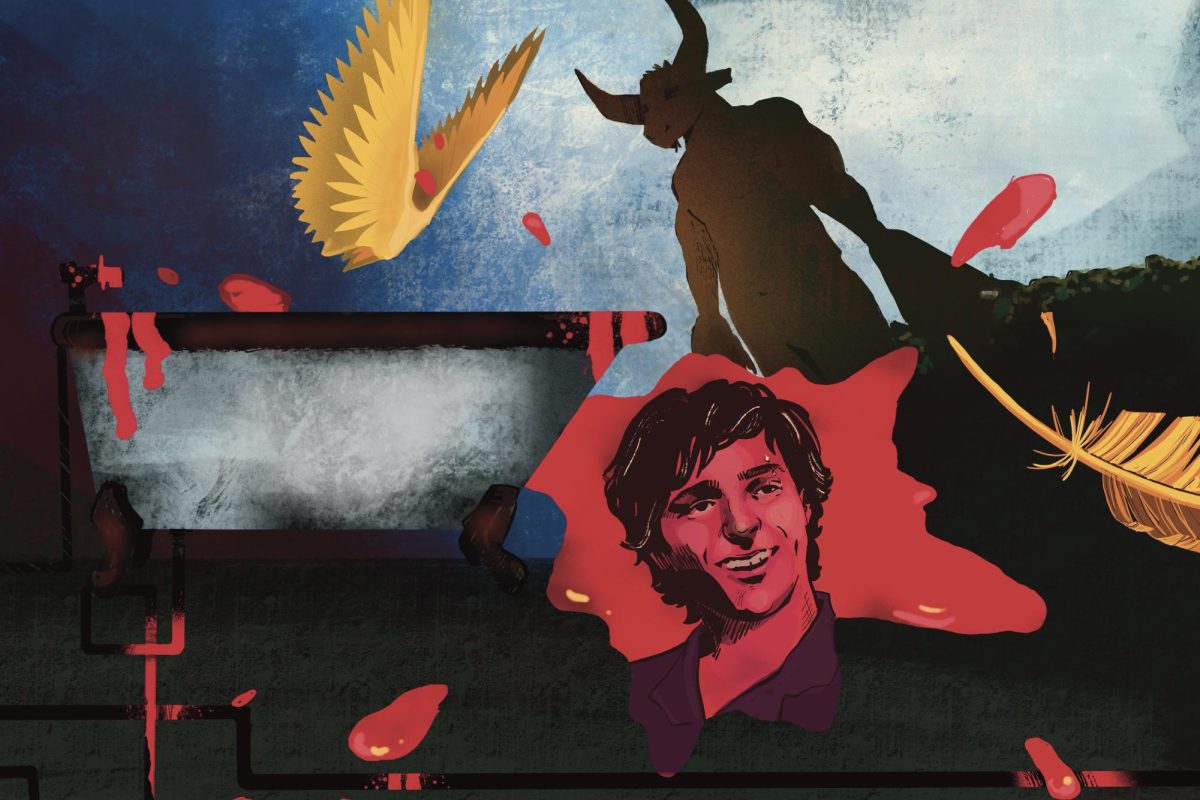A new exhibit at the Fleming Museum, Arts of Asia, opens with a 12th-century Cambodian Torso of a Deity. The sculpture, a two-foot pillar of smooth stone, appeals in its simplicity. The soft concave curve of the belly and narrow shoulders are all that remain to represent an ideal figure, yet they possess a poignantly universal humanity. Fine incisions mark a robe that drapes in stylized scrolls down the front. The precise linearity of the carving contrasts with the flesh-like quality of the smooth stone, revealing a tension between the impulse to decorate and the urge to represent faithfully the human form, two artistic inclinations that interrelate provocatively throughout the exhibit. On the wall opposite the Cambodian torso is a collection of Japanese masks donated by William Pickens (UVM ’58); the masks are the very antithesis of the statue, faces of polychrome wood smiling and gaping luridly from the wall. Used in Bugaku, the oldest dramatic form in Japan, they traditionally bear sacred status as the catalysts to alter identity. One mask after another astonishes with its bizarre form or deranged expression. There are butterfly smiles, fish smirks, out-popping glares. One mask depicts a lady’s face supposed to be beautiful because plucked-out eyebrows have been replaced with little spray-painted circles in the middle of her forehead. A half-century later and in another culture, here agai! n appears the trend of decoration subverting reality, although to a much different end. Yet each Japanese Masks mask in some way illustrates the irony that in order for the Bugaku actor to step out of himself (traditionally all are male), he must assume a collective identity, one that for all its grotesque detail portends to represent a type, a conventionalized reality. This is also the function to some extent of sacred art, blurring the details that individuate humanity to create in the visage of the venerated figure a vision beautiful yet anonymous. The Doris Duke Southeast Asia Art Collection contains several Buddha figures, and each derives significant power from the smooth symmetry of stylized features and the intense gaze of enlarged eyes. A Thai wooden statue of Buddha, dating from the eighteenth or nineteenth century and glimmering in gilt, stands in a miniature shrine. Its stylized linearity seems more the portrait of some inner quality than a human physical form. Indeed, with its elongated ears, sinuously curving arms, and neutral face, it seems the very embodiment of serenity. The only detail in the figure are the incised lines marking the borders of the robe, extending from one shoulder and curving in wide sleeves around each arm, which echo the body’s curves, unifying the whole into a design that approaches the abstraction of the fantastic arches and ornaments of the shrine’s ascending tiers. Not all the Buddhist figures possess such sacred solemnity as the Thai figure. A small Burmese sculpture of a Nat, or sprite, shows off a more whimsical aspect of the faith. The figure’s bright lacquered costume compliments his mirthful posture of dancing legs and an outstretched palm. Equally silly, a Thai elephant and monkey in bronze portray a didactic story in the Buddha legend. The monkey bows solicitously, bearing an ornately decorated fan, while the elephant bears on its lowered head an urn of precious liquid. A nineteenth-century wooden statue of Buddha from Burma is one of the most compelling pieces. Here the artist has chosen to portray Buddha at the moment of his death. The wooden figure reclines serenely, uninhibited by suffering or distress, its countenance as composed as those of Giotto’s angels, the graceful stylized folds of the robe following the contours of its body. The Burmese understood something about death that the rest of the Buddhist world did not, the note identifying the sculpture says. They portrayed the dying Buddha without weeping apostles or remorse but with acceptance and peace. And I think that the note is right, until I notice the gilt pooled in the crevices around the Buddha’s eyes, glistening wetly. Little did the artist know that a couple centuries would be enough time for decay to work its softening magic on the remote expanse of golden calm, and recall to attend the Buddha’s quiet acceptance of death the poignancy of human sorrow. The Nalin Collection of mid-eastern textiles concludes the exhibit and returns to the earlier theme of identity introduced by the Japanese masks. A Pakistani twentieth-century dress of green damask silk displays intricate embroidery in red cotton thread and tiny mirrors sewn on for decoration. In a cotton chador, also from Pakistan and dating from 1945, magenta-colored flowers clash dramatically with their moss-green background, as if to spite the institution of modesty the garment is intended to uphold. Headdresses of coarse black wool, decorated with rows of cowry shells and a motley assortment of buttons and coins, continue to be worn in Pakistan for traditional ceremonies, perhaps altering the modern identity for the sake of custom as radically as Japanese masks continue to transform and disguise for the stage. Arts of Asia, an exhibit at the Fleming Museum of new acquisitions from the Duke, Nalin, and Pickens Collections, runs through June 27.
















